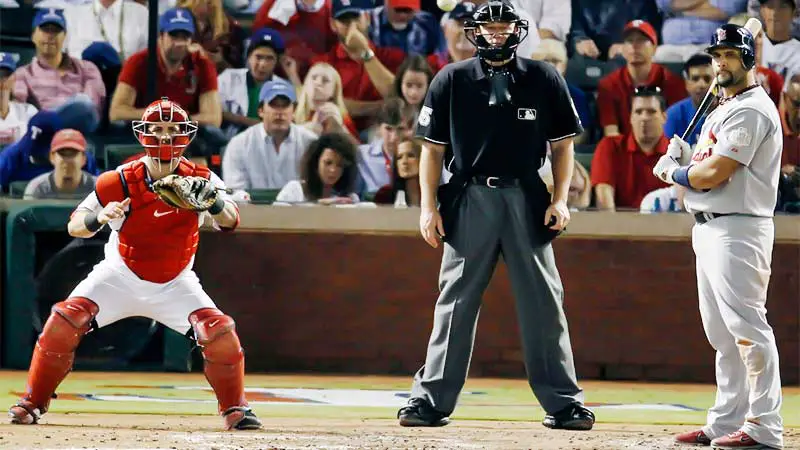In the intricate world of baseball, some rules carry significant strategic weight. Among these, the intentional walk rule stands out for its potential to change the course of a game.
This tactical move allows a team to bypass a threatening batter, shifting the game’s momentum and altering its dynamics.
Introduced as an officially tracked statistic in 1955, the intentional walk has evolved, with notable changes in 2017 aimed at improving the pace of play.
By understanding this rule’s purpose, execution, and impact, you can appreciate how it shapes the strategies and outcomes on the field. Dive into the nuances of the intentional walk and discover why it remains a pivotal element in baseball’s strategic playbook.
Breaking Down the Playbook: Intentional Walks Strategy in Baseball
Intentional walks (IBB) in baseball are a strategic maneuver used by the defensive team to give a batter a free pass to first base without throwing the usual four pitches outside the strike zone. Here’s a comprehensive overview:
Definition and Rules
An intentional walk, known as an intentional base on balls, permits a pitcher to deliberately walk a batter without pitching to them. The catcher signals this intention to the umpire, who awards the batter first base.
This rule’s primary purpose is to bypass a strong hitter and face a potentially weaker one. The modern rule, instituted in 2017, streamlined this process by eliminating the need to throw four wide pitches.
Instead, a team’s manager can signal their decision from the dugout, thus directly placing the batter on first base.
Execution Techniques
The classic method required the pitcher to throw four pitches far outside the strike zone, making it clear the batter shouldn’t swing. These wide pitches, known as sinkers, were thrown low and away to avoid accidental hits.
With the new rule, execution no longer involves any physical pitching; instead, the manager’s signal to the umpire suffices. This change aimed to reduce game duration, although debates about its strategic impact persist.
Teams now use intentional walks to manage game dynamics better, like when facing formidable hitters or setting up force plays strategically.
Strategic Implications of Intentional Walks
Intentional walks (IBBs) carry several strategic implications for both the offensive and defensive teams in baseball. Here’s a detailed look at these implications:
Common Scenarios for Use
Coaches often use intentional walks in scenarios such as facing a strong batter to avoid a game-changing hit, like a home run from someone like Barry Bonds with runners in scoring positions.
They may also use intentional walks to set up favorable matchups, creating force plays at multiple bases or aligning the pitcher against a weaker batter, like issuing an intentional walk to set up a double play opportunity when there’s a baserunner on second and first base is open.
Impact on Game Strategy
Intentional walks significantly influence game strategy by allowing teams to manage the flow of play and manipulate the opponent’s lineup.
This tactic is particularly useful for avoiding a formidable batter and instead pitching to a less threatening one, offering a psychological edge by respecting the batter’s prowess.
However, it can backfire if the next batter capitalizes on the situation, making it a critical decision in high-stakes moments.
Historical instances, such as Mel Ott in 1929 and Bill Nicholson in 1944, underscore the pivotal roles intentional walks have played in game outcomes.
Historical Overview of Intentional Walks
Intentional walks (IBBs) have been a part of baseball strategy for over a century, evolving in frequency and tactics over time. Here’s a historical overview of intentional walks:
Notable Changes and Updates
Intentional walks have undergone significant changes throughout baseball history. Initially, a pitcher needed to throw four pitches outside the strike zone to grant a batter first base.
In 1955, rules allowed for an intentional walk to be verbally requested but still required the pitches to be thrown.
This remained until 2017 when Major League Baseball (MLB) introduced a new rule allowing managers to signal for an intentional walk without throwing any pitches.
This change aimed to speed up the game, although critics noted the minimal time saved given the rarity of intentional walks.
Memorable Instances in Baseball History
Several notable instances highlight the strategic use of intentional walks in baseball. On August 2, 1881, Abner Dalrymple received an intentional walk, but the Chicago Cubs eventually lost, showing that the strategy doesn’t always ensure success.
In 1901, Nap Lajoie was intentionally walked with no outs, emphasizing how managers sometimes choose to avoid dangerous hitters over scoring opportunities.
On October 5, 1929, Mel Ott was intentionally walked during a crucial game, and Bill Nicholson’s intentional walk on July 23, 1944, also stands out as a significant historical example. These moments illustrate the delicate balance managers must maintain when using intentional walks.
Iconic Rule Usage in Modern Times
The first use of the new 2017 rule came on April 2, when Chicago Cubs manager Joe Maddon signaled an intentional walk for Yadier Molina of the St. Louis Cardinals in the ninth inning. This change streamlined the process and reflected MLB’s ongoing efforts to enhance game pace.
These historical and modern examples demonstrate intentional walks’ ongoing relevance and their pivotal role in baseball strategy. Their evolution reflects broader changes in the sport, aiming for efficiency without compromising strategic depth.
Frequently Asked Questions
When did they stop throwing pitches for intentional walk?
Intentional walks have been an officially tracked statistic only since 1955. Prior to the 2017 season, as part of Major League Baseball’s efforts to improve the pace of play, the rules were amended to allow a manager to order an intentional walk by simply signaling the umpire.
Can a hit batter refuse to go to the first base?
If the batter does not attempt to avoid the pitch, he is not awarded first base, and the pitch is ruled either a strike if in the strike zone or a ball if out of the strike zone. Umpires rarely make this call.
What is the DH rule?
Definition. The designated hitter rule allows teams to use another player to bat in place of the pitcher. Because the pitcher is still part of the team’s nine defensive players, the designated hitter — or “DH” — does not take the field on defense.
Can you steal a base on a walk?
Baserunners advance only if the walk forces them to the next base. Initially, it may seem that baserunners cannot attempt a steal because there is no action on the ball during a walk. However, since the ball remains live after a walk, baserunners can attempt to steal a base.
How does a pitcher cause an intentional walk in baseball?
The intentional walk is executed by the defensive team’s pitcher, who delivers four pitches intentionally out of the strike zone to the opposing batter.
Conclusion
Understanding intentional walk rules enriches your appreciation of baseball’s strategic depth. From its historical roots to modern adaptations, this rule remains a pivotal tool for managers aiming to control the game’s flow.
Whether you’re a seasoned fan or new to the sport, recognizing the tactical nuances of intentional walks enhances your overall experience.
As the game evolves, so do the strategies, ensuring baseball remains as thrilling and unpredictable as ever.
The recent changes in intentional walk procedures, such as signaling from the dugout, streamline gameplay while adding a layer of unpredictability.
This evolution underscores how both tradition and innovation coexist in baseball, offering endless fascination for enthusiasts and newcomers alike.








Pat Bloom